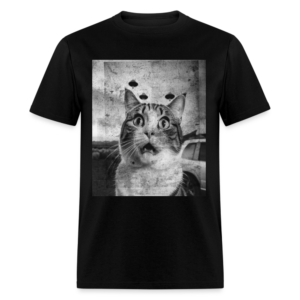Your cart is currently empty!
Tag: celestial events January
January’s Night Sky: Quadrantid Meteor Shower, Full Moon, and Mars’ Approach
January begins with a celestial spectacle, as the Quadrantid meteor shower reaches its peak on the nights of January 2 and 3. This annual meteor display offers a brilliant opportunity for stargazers to marvel at the night sky, weather permitting. As the month progresses, the first full Moon of the year graces the heavens, followed by Mars making its closest approach to Earth. These events make January a particularly exciting time for astronomy enthusiasts. Read on to learn how and when to catch these phenomena for an unforgettable skywatching experience.
The Quadrantid Meteor Shower: A Dazzling Display
The Quadrantid meteor shower is one of the most spectacular celestial events of the year, known for its bright fireballs and numerous meteors. Originating from the asteroid 2003 EH1, the Quadrantids are unique among major meteor showers due to their short but intense peak.
When and Where to Watch
The peak activity for the Quadrantid meteor shower occurs on the nights of January 2 and 3. During this time, up to 120 meteors per hour may streak across the sky under optimal conditions. The best viewing times are typically after midnight and before dawn when the radiant point—near the constellation Boötes—is higher in the sky.
Tips for Viewing Success
- Find a Dark Spot: To fully appreciate the meteor shower, head to a location away from city lights.
- Check the Weather: Clear skies are essential for visibility, so monitor local forecasts.
- Bring Comfort: Dress warmly and bring blankets or reclining chairs for a comfortable stargazing experience.
- Avoid Light Pollution: Allow your eyes to adjust to the dark for at least 20 minutes.
The First Full Moon of the Year
Midway through January, the first full Moon of the year, often called the “Wolf Moon,” illuminates the night sky. This lunar event holds cultural significance and provides an excellent opportunity for moonlit photography or simply admiring the beauty of our celestial neighbor.
Key Details
- Date: January 25 (exact timing varies by location).
- Appearance: The Moon will rise just after sunset, bathing the landscape in silvery light.
- Significance: Historically, the Wolf Moon signified the time of year when wolves were often heard howling, particularly in snowy regions.
Mars’ Closest Approach to Earth
Later in the month, the Red Planet takes center stage. Mars reaches its closest point to Earth in its orbit, providing a rare chance to observe the planet in detail through telescopes or even with the naked eye.
What to Expect
- Date: January 27.
- Brightness: Mars will shine brilliantly in the night sky, appearing as a reddish dot.
- Viewing Tips: Use binoculars or a telescope to observe surface features and polar ice caps. Mars will be located in the constellation Taurus, making it easier to spot.
The Science Behind the Approach
Mars’ proximity to Earth varies due to the elliptical orbits of the planets. When the two planets align on the same side of the Sun, the distance between them is minimized, offering unparalleled viewing opportunities.
Making the Most of January’s Celestial Events
January’s night sky offers something for everyone, from meteor enthusiasts to Moon lovers and planetary observers. To make the most of these events:
- Plan Ahead: Note the dates and times of each event on your calendar.
- Use Astronomy Apps: Mobile apps like SkySafari or Star Walk can help you locate celestial objects.
- Share the Experience: Organize a stargazing night with friends or family.
- Document the Moments: Capture photos of the meteor shower, full Moon, or Mars with a camera or smartphone equipped with a tripod.
The Importance of Stargazing
Stargazing not only provides a sense of wonder but also encourages an appreciation for the universe’s vastness and beauty. These celestial events serve as reminders of our place in the cosmos and inspire curiosity about the mysteries of space.
Conclusion
January kicks off the year with a trio of astronomical highlights: the Quadrantid meteor shower, the first full Moon, and Mars’ closest approach to Earth. Whether you’re a seasoned astronomer or a casual skywatcher, these events offer a fantastic opportunity to connect with the night sky. Don’t miss the chance to start your year with awe-inspiring views of our celestial neighbors.
Vintage Retro Long Tail Comet In The Sky Unisex Classic T-Shirt
$13.99Vintage Retro Long Tail Comet In The Sky Unisex Classic T-Shirt. The Vintage Retro Long Tail Comet In The Sky Unisex Classic T-Shirt features a striking and nostalgic design of a long-tailed comet streaking through the night sky. With its retro-inspired art style, this tee captures the beauty and wonder of celestial events, making it perfect for space lovers, astronomy enthusiasts, or anyone who appreciates cosmic designs. The classic fit and soft fabric offer all-day comfort, while the bold comet graphic adds a touch of the mystical and timeless to your wardrobe.
-

Hungry and Humble Football Player Flapping Arms Touchdown Celebration Unisex Classic T-Shirt #philly
$19.99 Select options This product has multiple variants. The options may be chosen on the product page -

Africatown in Philly Phrase Unisex Classic T-Shirt
$13.99 Select options This product has multiple variants. The options may be chosen on the product page -

Vintage Funny Cat Selfie UFO Alien Invasion Unisex Classic T-Shirt
$13.99 Select options This product has multiple variants. The options may be chosen on the product page -

Vintage Philly Underdogs German Shepherds Unisex Classic T-Shirt
$9.99 Select options This product has multiple variants. The options may be chosen on the product page -

Grab The Flag Take The Win Unisex Classic T-Shirt
$19.99 Select options This product has multiple variants. The options may be chosen on the product page
————————————————
We use AI GPT Chatbots to help with our content and may get some things wrong.
————————————————-


